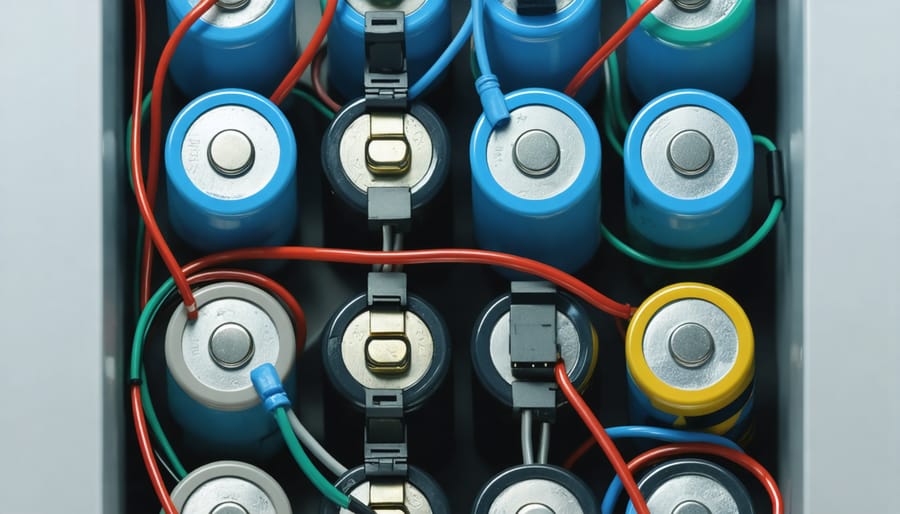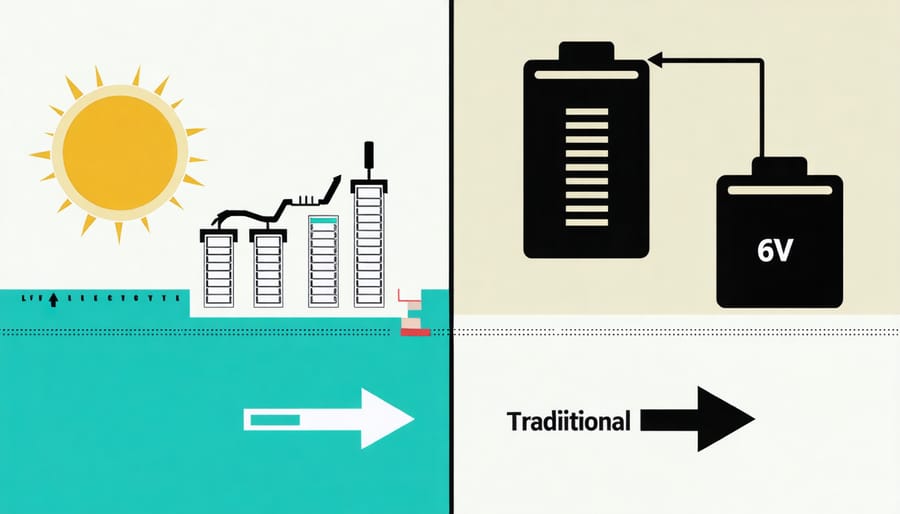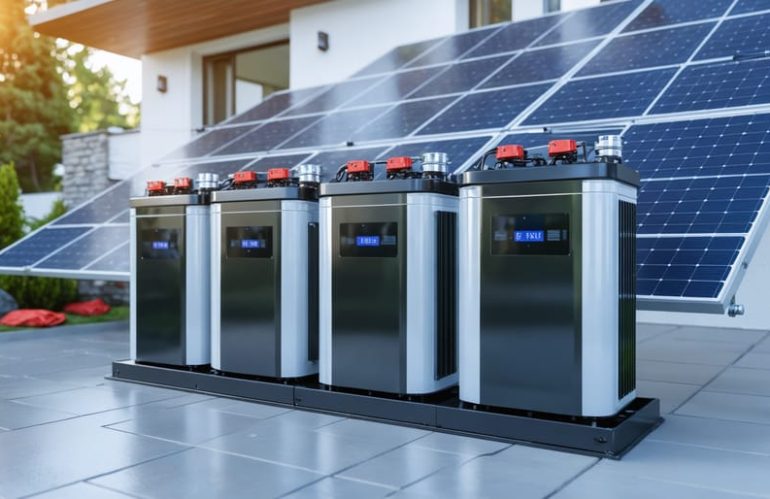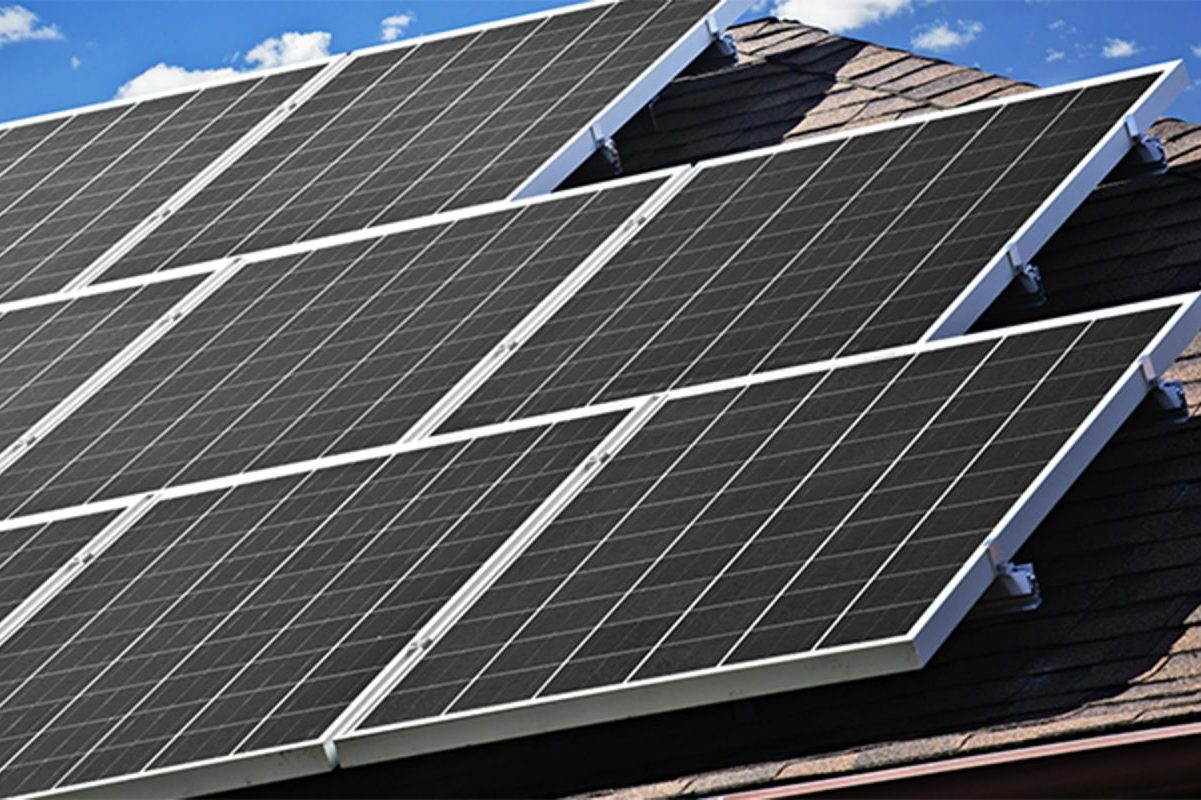Harness the untapped potential of 6-volt batteries to create a more resilient and cost-effective solar power system for your home. These deep-cycle workhorses, when properly configured for battery energy storage, deliver exceptional performance and longevity compared to their 12V counterparts. By connecting multiple 6V batteries in series and parallel configurations, homeowners can achieve the perfect balance of voltage, capacity, and reliability for their residential solar setup. Whether you’re building a new solar installation or upgrading an existing system, 6-volt batteries offer unique advantages: deeper discharge capabilities, longer cycle life, and superior durability in challenging conditions. This guide will walk you through everything you need to know about integrating 6V batteries into your solar power system, from basic configuration principles to advanced maintenance strategies that maximize your investment’s return.
Understanding 6-Volt Solar Battery Systems
The Advantage of Series Configuration
One of the most significant advantages of using 6V batteries in solar systems is their ability to be connected in series, creating higher voltage configurations while maintaining excellent performance. When connected in series, the voltage of each battery adds up, while the amperage remains constant. For example, connecting two 6V batteries in series creates a 12V system, while four batteries yield 24V – perfect for most residential solar setups.
This series configuration offers several benefits for homeowners. First, it provides more stable and efficient power delivery compared to parallel configurations. The higher voltage allows for reduced power loss over longer cable runs, making it ideal for larger homes or properties where batteries might be located some distance from the inverter.
Additionally, series-connected 6V batteries typically experience more balanced charging and discharging cycles, which can extend their overall lifespan. This configuration also makes it easier to monitor and maintain the system, as voltage measurements can quickly identify any underperforming batteries in the chain. For homeowners looking to maximize their solar investment, this reliable and efficient setup proves to be an excellent choice.

Lifecycle and Durability Benefits
One of the most compelling advantages of 6-volt batteries in solar systems is their exceptional longevity and durability. When properly maintained, these batteries typically last 8-10 years, significantly outlasting their 12-volt counterparts which often need replacement after 5-7 years. This extended lifespan is primarily due to their thicker plates and robust construction, which better withstand the daily charge-discharge cycles common in solar applications.
The deeper cycle capability of 6-volt batteries also contributes to their reliability. They can handle more frequent deep discharges without suffering permanent damage, making them ideal for households that rely heavily on stored solar energy. This resilience translates to fewer replacements over time, reducing both maintenance costs and environmental impact.
Additionally, 6-volt batteries maintain their performance levels more consistently throughout their lifetime. While all batteries naturally degrade over time, 6-volt units tend to maintain their capacity better, providing more reliable power output even as they age. This stability is particularly valuable for homeowners who depend on their solar system for critical backup power during outages.
Cost-Effectiveness for Homeowners

Long-Term Investment Returns
When evaluating the long-term financial benefits of a 6-volt battery solar system, the returns are particularly impressive. Over a typical 10-year period, homeowners can maximize energy savings by up to 40% compared to traditional 12V systems, primarily due to their enhanced efficiency and longer lifespan.
The initial investment in 6V batteries might be slightly higher, but the payback period is typically just 3-4 years. These batteries often last 7-10 years with proper maintenance, compared to 5-7 years for conventional alternatives. When factoring in replacement costs, a 6V system can save homeowners $2,000-$3,000 over a decade.
Additionally, 6V batteries require less frequent maintenance and have lower replacement rates, reducing ongoing costs. Their superior depth of discharge and cycle life mean they can store and deliver more usable energy over their lifetime. For a typical household, this translates to approximately $150-200 in annual energy bill savings, making them an economically sound choice for sustainable home energy storage.
Installation and Maintenance Considerations
Professional Installation Requirements
While 6-volt battery solar systems can be a DIY project, professional installation ensures optimal performance and safety. A qualified solar installer will properly size your system, configure battery arrays, and install necessary charge controllers and inverters. They’ll also ensure proper ventilation for the battery bank and install appropriate safety features like fuses and disconnects. The installation should comply with local electrical codes and may require permits. Your installer will test the system thoroughly, checking voltage levels, connections, and overall system functionality. They should also provide documentation and basic maintenance instructions. For best results, choose a certified installer with experience in low-voltage battery systems and ask for references from previous installations.

Integrating with Existing Solar Systems
Integrating 6V batteries into your existing solar setup can be a straightforward process when done correctly. The key is ensuring compatibility with your current solar battery backup systems and charge controllers. Start by determining your system’s voltage requirements – most home solar systems operate at 12V, 24V, or 48V. To achieve these voltages, you’ll need to wire multiple 6V batteries in series.
For example, to create a 24V system, you would connect four 6V batteries in series. When adding new 6V batteries to an existing bank, always use batteries of the same type, capacity, and age to ensure optimal performance and longevity. It’s also important to verify that your charge controller can handle the additional capacity.
Remember to update your system’s monitoring equipment and adjust charge settings accordingly. Many homeowners find that adding 6V batteries to their existing setup provides enhanced storage capacity and improved system reliability without requiring a complete system overhaul.
Six-volt battery solar systems represent a reliable and cost-effective solution for sustainable home energy storage. Their durability, excellent deep-cycle performance, and compatibility with various solar setups make them an attractive choice for homeowners looking to embrace renewable energy. As technology continues to advance and solar adoption grows, we can expect to see even more efficient and affordable 6V battery options entering the market. The simplicity of maintaining these systems, combined with their potential for significant energy cost savings, positions them as a smart investment for environmentally conscious homeowners. Whether you’re just starting your solar journey or upgrading an existing system, 6V batteries offer a proven path to energy independence and a greener future for your home.









